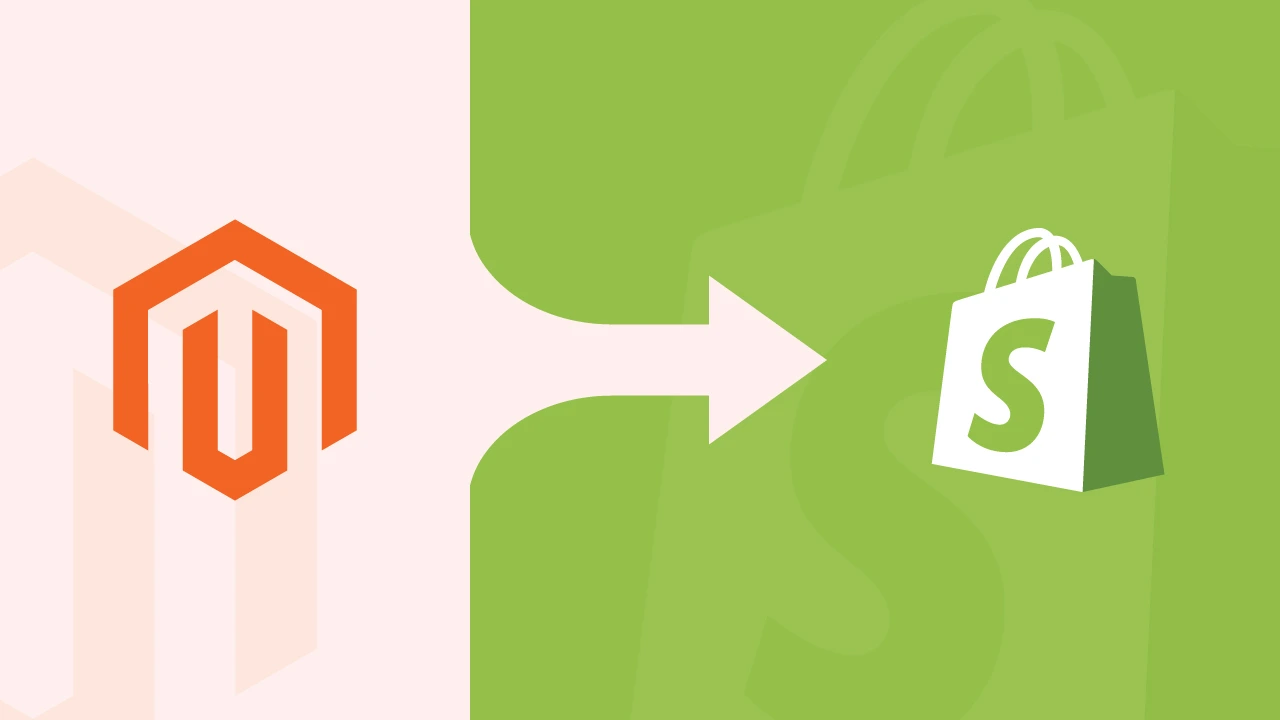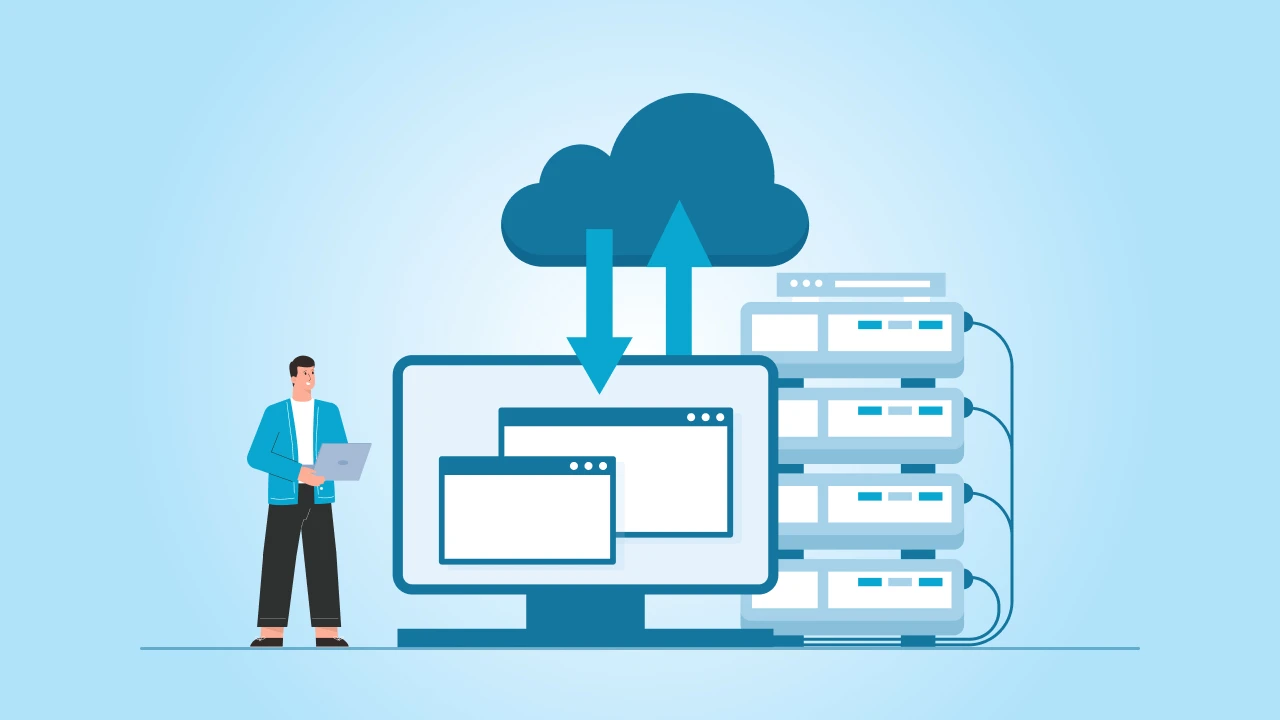For years, Magento has been a popular choice for businesses looking for a highly customizable and flexible solution.
But what worked well a few years ago might now feel like it’s holding you back. If you are currently using Magento to run your eCommerce store, you may have noticed some challenges—high maintenance costs, a steep learning curve, and time-consuming updates, to name a few.
That’s why so many businesses are rethinking their platform choices and making the switch to Shopify.
But transitioning from Magento to Shopify isn’t as simple as flipping a switch. It’s a process that requires careful planning and execution to ensure a smooth transition without losing valuable data or customers.
In this post, we will cover the benefits of switching to Shopify, break down the migration process, and help you navigate common challenges along the way.
So let’s get started.
Key Benefits of Migrating from Magento to Shopify
Switching from one platform to another is a significant decision for any business, but the benefits of moving from Magento to Shopify can truly be a game-changer. Here’s why Shopify is increasingly becoming the preferred choice for eCommerce businesses:
1. Cost-Effectiveness
Honestly, a Magento store often comes with hidden costs, including hosting, development, and regular updates. On the other hand, Shopify eliminates these headaches with an all-in-one pricing model. This model includes hosting, security, and platform updates.
For small to medium-sized businesses, this inclusion means significant cost savings without having to compromise on features and performance.
2. Ease of Use
When compared to Shopify, Magento is slightly more complex and requires technical expertise to manage the store. Whereas Shopify is designed with simplicity in mind.
Shopify’s intuitive interface lets store owners manage inventory, process orders, and update their website without relying on a Shopify developer. Now, this user-friendly approach is especially beneficial for teams without in-house technical resources.
3. Scalability
As your business expands, Shopify grows right along with it. Whether you are dealing with a surge in traffic during the busy holiday season or adding hundreds of new products to your store, Shopify’s cloud-based infrastructure keeps everything running smoothly. No matter the circumstances, you can count on your store to perform reliably.
4. Enhanced Performance
Shopify is built for speed. It offers faster page loading times compared to Magento, which often depends on self-hosted setups that can sometimes slow things down. A quicker website doesn’t just make browsing smoother for your customers—it also helps boost your search engine rankings and can lead to more sales.
5. Robust Security
Security is a top priority in eCommerce, and Shopify takes it seriously. With built-in SSL certification, PCI compliance, and regular security updates, you can rest assured that your store and customer data are protected. This level of security removes the burden of managing your own security measures, a common challenge for Magento users.
6. Extensive App Ecosystem
Shopify’s app store offers thousands of integrations to extend your store’s functionality. From marketing tools and payment gateways to inventory management and customer support, Shopify apps are easy to install and integrate seamlessly. This gives you the flexibility to customize your store without needing to write code or hire a Shopify developer.
7. Modern Design Options
With Shopify, you gain easy access to a wide range of professionally designed themes that are mobile-friendly and optimized for conversions. Unlike Magento, where customizing themes often requires technical skills, Shopify allows you to make design tweaks easily through its drag-and-drop editor.
8. Streamlined Maintenance
Managing a Magento store often involves regular updates, bug fixes, and server monitoring. Shopify handles all of this for you, freeing up your time to focus on growing your business rather than maintaining your website.
9. Better Support and Community
Shopify provides 24/7 customer support, ensuring that you can resolve issues quickly whenever they arise. Additionally, Shopify has an active community of users, developers, and experts who share valuable resources, tips, and solutions.
Schedule a free consultation with cmsMinds and discover how we can help you transition to Shopify with ease.
Migration Process from Magento to Shopify
Now that we have seen the benefits of migrating to Shopify, let’s take a detailed look at the process. If you glance at the step-by-step process, it might seem a lot but with proper planning, the migration can be smooth and rewarding.
1. Evaluate and Plan Your Migration
Before diving in, take a good look at your existing Magento store. Review your product catalog, customer data, and order history. Identify what needs to be migrated and what can be left behind—think outdated products, inactive customer accounts, or irrelevant data. This is also the time to set clear goals for your new Shopify store, such as improving design, enhancing functionality, or streamlining processes.
💡 Pro Tip: Use this opportunity to clean up your data. A fresh start is a perfect time to remove unnecessary clutter from your store.
2. Backup Your Data
Data is the backbone of your business, so creating a full backup of your Magento store is a super important step. This ensures that if anything goes wrong during the migration, you can recover your information without any major setbacks. Save backups of your product details, customer information, order history, and website content.
Why It Matters: A backup acts as your safety net. It’s better to be safe than sorry!
3. Set Up Your Shopify Store
Once you have planned your migration, it’s time to set up your new Shopify store. Start by creating a Shopify account and choosing a plan that fits your business needs. Next, pick a theme that matches your brand’s look and feel. Shopify’s theme store has plenty of professional options to choose from, and customizing them is straightforward with the drag-and-drop editor.
💡 Pro Tip: Focus on mobile-friendly designs. Most online shopping happens on mobile devices, so a responsive theme is a must.
4. Export Data from Magento
Exporting data from your Magento store is a technical but manageable step. Most commonly, this includes products, customers, and orders. Magento provides tools to export data in CSV format, which is compatible with Shopify’s import tools.
What to Export:
- Product information (titles, descriptions, prices, images)
- Customer data (names, email addresses, purchase history)
- Order history (past transactions and payment details)
5. Import Data into Shopify
Now it’s time to bring your data into Shopify. Shopify offers an import tool that supports CSV files, making the process relatively simple. Alternatively, you can use third-party migration apps or work with a professional Shopify migration service for more complex setups.
💡 Pro Tip: Double-check that all imported data is accurate and properly mapped—no one wants to discover a missing product or incorrect pricing after the migration.
6. Recreate Your Store Design and Functionality
This is where Shopify shines. Rebuild your store’s design using Shopify’s themes and tools. If you had specific functionalities on Magento, you’ll likely find apps in Shopify’s app store to replicate or even enhance them. From SEO tools to payment gateways, Shopify’s app ecosystem has you covered.
7. Test, Test, Test
Before launching, test your new store thoroughly. Navigate through pages, check the functionality of features like search, add-to-cart, and checkout, and ensure all your data has migrated correctly. Pay special attention to your SEO settings, URLs, and redirects to preserve your search engine rankings.
💡 Pro Tip: Involve your team or even trusted customers in the testing process to catch issues you might overlook.
8. Launch Your Shopify Store
Once everything looks good, it’s time to go live! Choose a low-traffic time to switch over and make your new Shopify store public. Monitor the transition closely, and be prepared to address any last-minute issues that arise.
💡 Pro Tip: Announce your new store to your customers with a clear message highlighting improvements. It’s a great way to keep them engaged and excited about the changes.
9. Post-Launch Monitoring
After the launch, keep a close eye on your store’s performance. Monitor traffic, order processing, and customer feedback to ensure everything is running smoothly. Use Shopify’s analytics tools to track key metrics and identify areas for improvement.
Challenges in Migrating from Magento to Shopify
While the move to Shopify comes with numerous benefits, it’s important to understand the challenges involved in migrating from Magento. Recognizing these hurdles upfront will help you plan effectively and avoid unnecessary headaches during the transition.
To make it easier, let us break down the most common challenges and how to handle them.
1. Data Loss or Corruption
Transferring large volumes of data—like product details, customer information, and order history—can be tricky. There’s always a risk of data loss or corruption during migration, especially if the process isn’t handled carefully.
How to Overcome It:
- Create a complete backup of your Magento store before starting the migration.
- Use migration tools or professional website migration services to ensure accuracy.
- Test data imports on Shopify to verify everything transferred correctly.
2. Preserving SEO and Traffic
One of the biggest concerns during migration is the potential impact on your SEO rankings. Changing URLs, losing meta data, or breaking links can lead to traffic drops, which can hurt sales.
How to Overcome It:
- Set up 301 redirects for all old URLs to their new Shopify counterparts.
- Ensure meta titles, descriptions, and alt tags are carried over properly.
- Test your new site with tools like Google Search Console to catch any errors.
3. Design and Feature Compatibility
Magento allows extensive customization, which means your store might have features or designs that don’t translate easily to Shopify. Recreating these elements can be time-consuming and may require alternative solutions.
How to Overcome It:
- Identify essential features and find Shopify apps or built-in tools to replicate them.
- Work with a Shopify expert if you have highly customized designs that need to be recreated.
- Focus on improving the user experience rather than replicating every detail of the old site.
4. Learning Curve for Shopify
While Shopify is more user-friendly than Magento, there’s still a learning curve for those unfamiliar with the platform. Adjusting to a new dashboard, tools, and workflows can take time.
How to Overcome It:
- Take advantage of Shopify’s tutorials, guides, and support resources.
- Dedicate time for your team to get familiar with Shopify’s admin interface before launching.
- Start with basic features and gradually explore more advanced tools.
5. Downtime and Disruption
The migration process can lead to temporary downtime, which might disrupt customer experience and sales. Managing this risk is crucial to avoid losing revenue or damaging your brand reputation.
How to Overcome It:
- Plan your migration during low-traffic periods.
- Test your Shopify store thoroughly before switching it live.
- Communicate with your customers about any potential downtime to set expectations.
6. Integration Challenges
If your Magento store relies on third-party tools or integrations, migrating them to Shopify might not be straightforward. Some tools may not have Shopify-compatible versions, requiring new solutions.
How to Overcome It:
- Audit your current integrations and find Shopify alternatives equivalents.
- Test new integrations thoroughly to ensure they work seamlessly with your Shopify store.
- Work with developers or migration experts for custom integrations.
7. Cost of Migration
While Shopify reduces ongoing costs, the migration process itself can be expensive, especially if you hire experts or use paid tools. The upfront investment may feel like a challenge for smaller businesses.
How to Overcome It:
- Plan your migration budget carefully, accounting for tools, themes, and professional services.
- Focus on essentials during the migration and prioritize additional features post-launch.
- Look for cost-effective tools or Shopify’s free resources to reduce expenses.
8. Customer Account Migration
If your Magento store allows customers to create accounts, transferring this data to Shopify can be challenging. Shopify doesn’t support direct migration of passwords due to encryption, which can create a hurdle for your customers.
How to Overcome It:
- Inform customers in advance about the migration and ask them to reset their passwords.
- Use email campaigns to guide them through the process of creating new accounts.
- Make the account creation process seamless and user-friendly.
9. Team Adjustment and Training
Your team will need to adapt to new workflows and processes on Shopify. If they’re accustomed to Magento, the shift might initially slow down operations.
How to Overcome It:
- Provide training sessions for your team on Shopify’s admin dashboard.
- Assign a point person or Shopify expert to address team questions and concerns.
- Encourage hands-on practice to help your team build confidence with the platform.
Conclusion
Switching from Magento to Shopify is more than just changing platforms—it’s about embracing a solution that supports your business’s growth and streamlines your operations.
Although the migration process comes with its challenges, like managing data transfers, preserving SEO, and adapting to a new platform, these obstacles are actually manageable with proper planning. Of course, you need a structured approach, paired with the right tools and expert guidance. This will help you transition seamlessly, ensuring your store is ready to perform better than ever.
Let the experts at cmsMinds handle the heavy lifting. Contact us today for a seamless migration experience!





